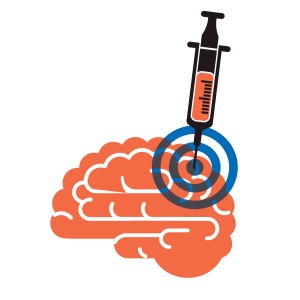 Glioblastoma, a rare form of brain cancer, is always fatal and kills its victims within months. Surgery, which is the standard of care, may add only a few months to a patient’s life before the cancer reappears.
Glioblastoma, a rare form of brain cancer, is always fatal and kills its victims within months. Surgery, which is the standard of care, may add only a few months to a patient’s life before the cancer reappears.
“Even though surgical removal is the number one choice for treatment, the surgeon knows that some of the tumor cells are going to be left behind and grow back,” says Honggang Cui, assistant professor of chemical and biomolecular engineering at the Whiting School.
Additionally, molecules of chemotherapeutic drugs can’t squeeze through the tightly packed blood-brain barrier cells. Neurosurgeons can place cancer therapies directly into the brain via an FDA-approved biodegradable, drug-loaded wafer called gliadel, but its active ingredients leach away quickly and penetrate only a few millimeters, while tumor cells may have migrated centimeters.
To destroy cancer cells that escape surgical removal, Cui has developed a gel composed entirely of nanofibers made of self-assembling cancer drug molecules. “The nanofibers act like overcooked spaghetti; they interact with each other and form a mass,” says Cui.
Using the drug compound itself as the delivery vehicle enhances its performance. “Drug release is slowed, the nanofibers can slip more deeply into the brain tissue, and the fibers are coated with peptides so as to escape attack from the immune response,” he explains.
Cui, an affiliated faculty member of the Institute for NanoBioTechnology, is collaborating with neurosurgeon Alfredo Quinones-Hinojosa at the Johns Hopkins University School of Medicine to test the gel in animal models.




